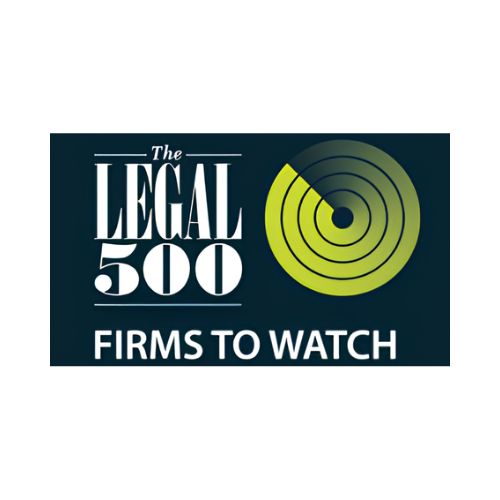| Reference Date | Version | December 20, 2023 | 1.0 |
| Keywords | Board Report, Companies Act, State of the company’s affairs, Disclosures and Compliances, Director Duties |
| Legislation(s) | 1. Companies Act, 2013 (India) 2. Securities and Exchange Board of India (Listing Obligations and Disclosure Requirements) Regulations, 2015 3. Companies Act, 2006 (United Kingdom) |
| Jurisdiction | India |
Introduction
The Board, among other matters, must opine on the ‘state of the company’s affairs’ in its Board Report. Such a Board Report must be attached to the financial statements laid before the shareholders during the annual general meeting.
The objective of the Board Report, the coverage of which is comprehensive as mandated under the Companies Act 2013, is to ensure that stakeholders are aware of the numbers contained in the financial statements, which may or may not be window-dressed.
This write-up closely examines the content intended to be covered under the head of ‘state of the company’s affairs’, which companies often overlook as it does not involve any specific disclosures.
‘Inclusions’ in the Report by the Board of Directors
The Report of the Board required to be attached to the financial statements laid before a company in general meeting is necessary to include several matters which are listed under Section 134(c) of the Companies Act, 2013, such as particulars of loans, guarantees or investments under section 186, particulars of contracts or arrangements with related parties, material changes and commitments, if any, affecting the financial position of the Company which have occurred between the end of the financial year of the Company to which the financial statements relate and the date of the report, and details about policy developed and implemented by the Company on corporate social responsibility initiatives taken during the year. One such matter is ‘ the state of the company’s affairs’.
If a company is listed, additional requirements must be complied with under the Securities and Exchange Board of India (Listing Obligations and Disclosure Requirements) Regulations, 2015.
It is important to note that Section 134 of the Companies Act 2013 specifies the heads that must be included in a Board Report and does not provide for an exhaustive list of heads of information.
‘the state of the Company’s affairs’
Said Section 134 sets out 17 heads that are necessarily required to be included in the Board Report. Since ‘the state of the company’s affairs’ is one such head, it would be expected that the Board would incorporate information other than what is already covered under the specific heads.
The following are extracts with respect to information under the head ‘state of the company’s affairs’ from the board reports of certain companies.
Company in the IT space
“….
Your Company serves as the technology-enabled service solutions partner to Mutual Funds and Private Equity Funds. The Company is registered with the Securities and Exchange Board of India (‘SEBI’) to provide Registrar & Transfer Agency services to Mutual Funds. It has been classified as a Qualified Registrar and Transfer Agent (QRTA) as it manages more than 2 Million Folios. As a regulated organisation, the Company brings the highest standards to service delivery and adherence to regulations. The Company also extends the facility of call center operations to its various clients and acts as a Depository Participant for Investors. The Company is also carrying on the payment services to its various mutual fund clients and others. The activity which was unregulated has been brought under the purview of Reserve Bank of India (“RBI”). An application has been filed with RBI for being registered as Payment Aggregator, which is under process.
During the year, an office has been set up at XXXXXX for catering to the clients operating from the above place. The Company’s operations as a Central Record Keeping Agency (“CRA”) were launched in March 2022. CAMS CRA is the first CRA in the country to be fully deployed and hosted on the cloud. It has received positive response from the market and has enrolled more than 2000 subscribers as on date.
The Account Aggregator (“AA”) business and the Technology Service Provider activities for the AA activities have been commenced during the year through the subsidiaries.
Information on the operational and financial performance, among others, is provided in the Management Discussion and Analysis Report (“MD&A Report”), which forms part of the Annual Report and is in accordance with the SEBI (Listing Obligations & Disclosure Requirements) Regulations, 2015.”
Company in the electrical equipment and home appliance space:
“XXXXXX performance during the year was backed by strong growth across the product verticals. Over the years, XXXXXX has evolved into a formidable FMEG and consumer durable player by seeding new categories and scaling them to create reasonably sized revenue pools. The switchgear segment reported 18.7% revenue growth supported by a pickup in the construction cycle. While the sudden & sharp movements in commodity prices impacted the market sentiments in the cables segment, Havells grew the segment revenue by 19.1%. The lighting segment grew by 16.8%, with healthy growth from both consumer and professional lighting. Professional lighting accelerated its growth with pickup in the industrial and commercial sectors. Despite witnessing a major transition in the fans category during the year, the Electrical Consumer Durables (ECD) segment reported a 7.5% revenue growth. Havells continues to focus on the premiumisation of the fan portfolio. The “others” segment, which includes motor, solar, pumps, personal grooming and water purifiers, grew by 25.2%.
Lloyd demonstrated encouraging performance with solid revenue growth of 49% and continued its journey to be a meaningful player in the consumer durable industry. The segment’s profitability was impacted, given commodity price pressures and continued hypercompetition in the market. During the year, we commissioned XXXXXX (Chittoor District in the State of Andhra Pradesh). We stayed focused on innovating, investing in our brands, expanding our omnichannel presence, enhancing our digital capabilities and nurturing a solid talent pool. Continuous investment in the latest technology and innovation has helped the organisation to stay ahead in a highly competitive landscape. In addition to multiple patents being filed during the year, we launched many new products including XXXXXX. The brand remained a key focus area during the year, with significantly higher advertising and sales promotion expenditure vs FY22. We ensured that we reach out to the customers and make our brand available wherever they are. While steadily growing our distributors/ dealers network vertically and horizontally, we expanded our presence in emerging channels. The E-commerce channel grew with a strong product portfolio and deep digital engagement with our consumers. Modern Format Retail (MFR) continues to emerge as a critical channel with expanding shelf space at the counters. With emerging rural opportunities, we cemented our position as the most penetrated FMEG brand in rural markets. Backed by revenue growth and strong financial discipline, we generated healthy cash flows. The balance sheet was further strengthened by pre-paying the outstanding borrowings during the year. Subsidiary Companies, Joint Venture and Consolidated Financial Statements As of 31st March 2023, the Company has one direct overseas subsidiary, namely XXXXXX. The Consolidated Profit and Loss Account for the period ended 31st March, 2023 includes the Profit and Loss Account for the subsidiary XXXXXX for the complete Financial Year ended 31st March, 2023 and Profit and Loss Account for the subsidiary XXXXXX for the period up to 27th October, 2022. The Board of Directors of the Company has, by Resolution passed in its Meeting held on 3rd May 2023, given consent for not attaching the Balance Sheet of the subsidiary concerned. The Consolidated Financial Statements of the Company, including the subsidiary duly audited by the statutory auditors, are presented in the Integrated Annual Report. The consolidated financial statements have been prepared in strict compliance with applicable Accounting Standards and, wherever applicable, the SEBI (Listing Obligations and Disclosure Requirements) Regulations, 2015, as prescribed by the Securities and Exchange Board of India. A Report on the Performance and Financial Position of the subsidiary included in the Consolidated Financial Statements is presented in a separate section in this Integrated Annual Report. Please refer (Form No. AOC-1) annexed to the Financial Statements in the Integrated Annual Report. The standalone annual accounts of the subsidiary company and the detailed related information shall be made available to Shareholders of the Company and of its subsidiary company upon request and it shall also be made available on the website of the Company i.e.XXXXXX. The annual accounts of the subsidiary company shall also be kept for inspection by any shareholder in the Head Office of the Company and the office of its subsidiary company.”
Company in the Cement space:
“The performance of the Cement and Ready Mix Concrete business are detailed out in the Management Discussion and Analysis Report, which forms part of the Annual Report.”
The above extracts demonstrate that the disclosure under the head ‘state of the company’s affairs’ in the Board Report qualitatively and quantitatively varies from company to company. Board Reports of several companies do not even contain information under given heads – information in the Board Report is consolidated.
Companies tend to provide information about the Company, not necessarily the ‘state of the company’s affairs’. Arguably, the scope of the ‘state of the company’s affairs’ is unclear.
State of the company’s affairs– Explained
The ‘Guidance Note on Report of the Board of Directors’, as published by the Institute of Company Secretaries of India in May 2019, states that while disclosing its ‘state of the company’s affairs’ of the Company, the Report shall describe
– the nature of the business being undertaken by the Company,
– the achieved growth,
– new acquisitions,
– structural changes,
– Intellectual Property Rights developed by the Company,
– business agreements, mergers and acquisitions, divestments, etc.
– the material events that impact the business of the Company
– the highlights in operations indicative of the diversification
– The overall growth of the Company was made in the course of the year.
Since listed companies also present a consolidated financial statement, it is necessary to summarise the material events related to the subsidiaries that potentially impact the Company’s state of affairs.
Whether a particular piece of information or event relating to a subsidiary impacts the ‘state of the company’s affairs,’ the Company requires considering various criteria. The abovementioned Guidance Note states that the following criteria may be considered to evaluate whether such information or event shall fall under the ‘state of the company’s affairs’ of the Company:
– the manner in which it may impact (directly or indirectly) the Company’s reputation.
– whether the omission of such an event or information causes a significant market reaction and alters or discontinues information or event publicly available when such omission does come to light later.
As per the Guidance Note, the Board Report must mention the information or event relating to the subsidiary if such an event or information impacts 10 per cent or more of the consolidated net worth or turnover of the holding Company.
With respect to the duty of the directors in making the Board Report, the Cadbury Committee on ‘The financial aspects of Corporate Governance’ made the following suggestions:
“It is the board’s duty to present a balanced and understandable assessment of the company’s position’. ‘Objective and professional’ relationships should be maintained with the auditors, and the board should also establish an audit committee’ of at least three non-executive directors with written terms of reference’ dealing clearly with its authority and duties. Directors, finally, should explain their responsibility for preparing the accounts alongside the auditors’ reporting responsibility statement, and directors should also report on the effectiveness of the Company’s internal control system and on whether the business is a going concern ‘with supporting assumptions or qualifications as necessary.'”
Directors’ Report in the UK
The corresponding legislation to the Companies Act of 2013 in the United Kingdom is the Companies Act of 2006 (‘UK Act’). The directors’ report under the UK Act has two separate provisions relating to the contents of the directors’ report:
(i) business review
(ii) statement as to disclosure to auditors
Section 417 of the UK Act deals with ‘Contents of directors’ report: business review’,
“…
(3) The business review must contain—
(a) a fair review of the Company’s business, and
(b) a description of the principal risks and uncertainties facing the Company.
(4) The review required is a balanced and comprehensive analysis of—
(a) the development and performance of the Company’s business during the financial year, and
(b) The position of the Company’s business at the end of that year is consistent with the size and complexity of the business.
(5) In the case of a quoted company, the business review must, to the extent necessary for an understanding of the development, performance or position of the Company’s business, include—
(a) the main trends and factors likely to affect the future development, performance and position of the Company’s business and
(b) information about—
(i) environmental matters (including the impact of the Company’s business on the environment),
(ii) the Company’s employees, and
(iii) social and community issues,
including information about any policies of the Company in relation to those matters and the effectiveness of those policies; and
(c) subject to subsection (11), information about persons with whom the Company has contractual or other arrangements which are essential to the business of the Company.
If the review does not contain information of each kind mentioned in paragraphs (b)(i), (ii) and (iii) and (c), it must state which of those kinds of information it does not contain…”
Said Section 417 clearly emphasises transparency in the company’s affairs, and the requirement for a balanced and comprehensive analysis indicates that the report shall move beyond just financial metrics. The provision enables the companies to consider broader factors that may impact the Company, thereby providing the stakeholders with a more holistic view.
Viewpoint
The Board of Directors is responsible for sharing true, accurate, complete and relevant information about the Company to its stakeholders.
Section 134 of the Companies Act 2013 requires a report by the Board to accompany the financial statements laid before a company in its general meeting, and such a report is needed to meet the disclosure standards outlined in the said section. Among other matters, the Board must disclose the Company’s ‘state of affairs’.
The expression ‘state of the company’s affairs’ has a broad connotation and is arguably capable of creative interpretation. It will be helpful if the provision lays out specific requirements. Perhaps the ‘state of the company’s affairs’ could encompass a more comprehensive business review and consider additional factors related to development, performance and the company’s position during the financial year.




























